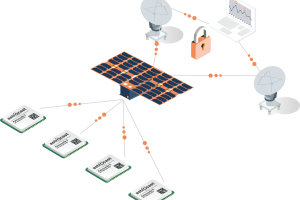Among all the internet of things (IoT) designs that we’ve been working on, some clear patterns are starting to emerge. Customers start by looking at point-point M2M (machine-to-machine)connections and move to full IoT implementations.
The driver for adopting M2M is the opportunity to eliminate the user interface, and many customers are replacing it with a smartphone app.
This not only reduces the cost, but also removes a number of potential points of failure. The display can be eliminated, and the number of mechanical switches and buttons can be reduced.
This reduces the need to cut apertures in the casing, further reducing cost and improving reliability. It also makes it easier to ‘seal’ the unit.
Of course, a point to point M2M connection via Bluetooth Low Energy or NFC does not really count as an IoT design, but normally removing the UI is the first step.
Having taken the User Interface off the device, it can as easily be managed via an Internet connection as via a local tablet.
An Internet connection opens up the issue of security. Vendors have seen the opportunity to provide white label solutions that take care of all of the connectivity issues including security.
How many of the designs that we’re working on class as wearable? Truthfully, not that many.
We are currently seeing M2M technology being introduced into sportswear like trainers, but it is too early to say if other markets will open up.
I see M2M as both a subset of, and a driver for, the Internet of Things. It is frequently a stepping stone to the adoption of mass networking.
Having introduced connectivity and remote management, customers find whole new worlds of functionality open up. They start offering new services, which quite often bring new revenue streams. So the business opportunities are in the services that are enabled by the internet of things rather than the devices (or things) themselves.
Writer is John Bowman, marketing director (Semiconductors) at Anglia Components
 Electronics Weekly Electronics Design & Components Tech News
Electronics Weekly Electronics Design & Components Tech News




